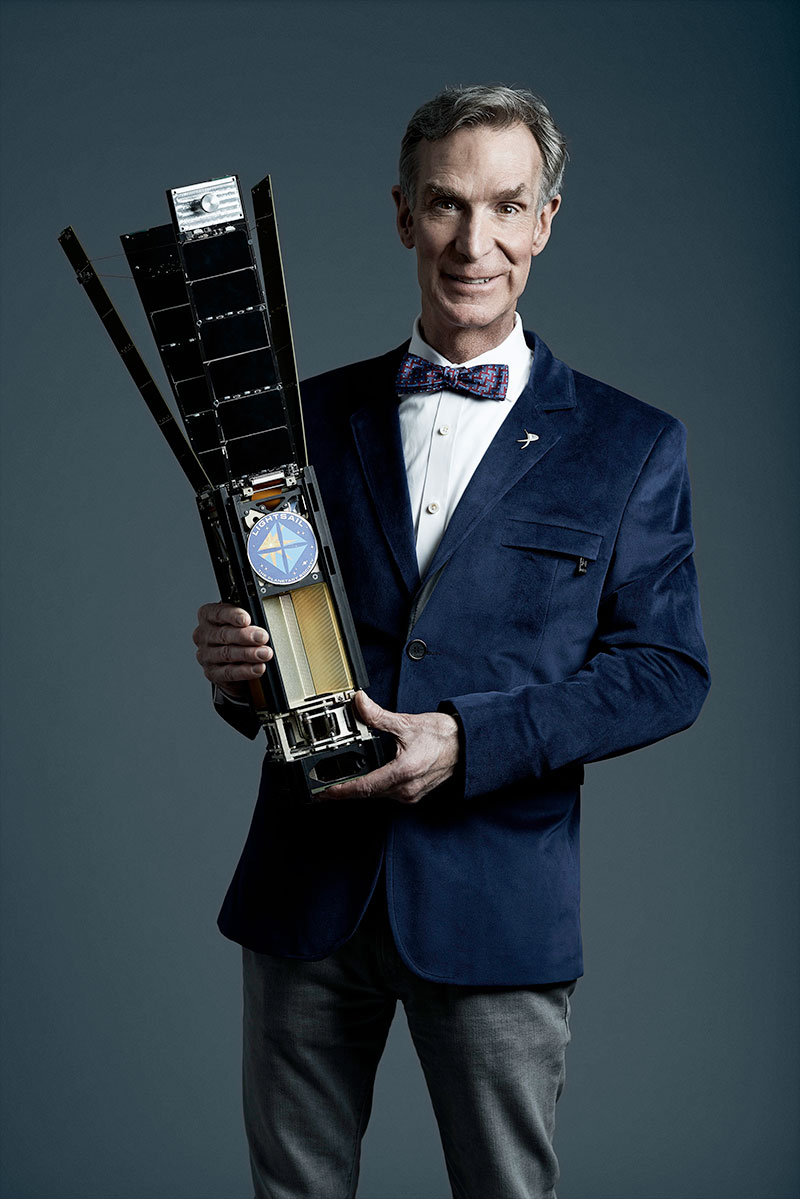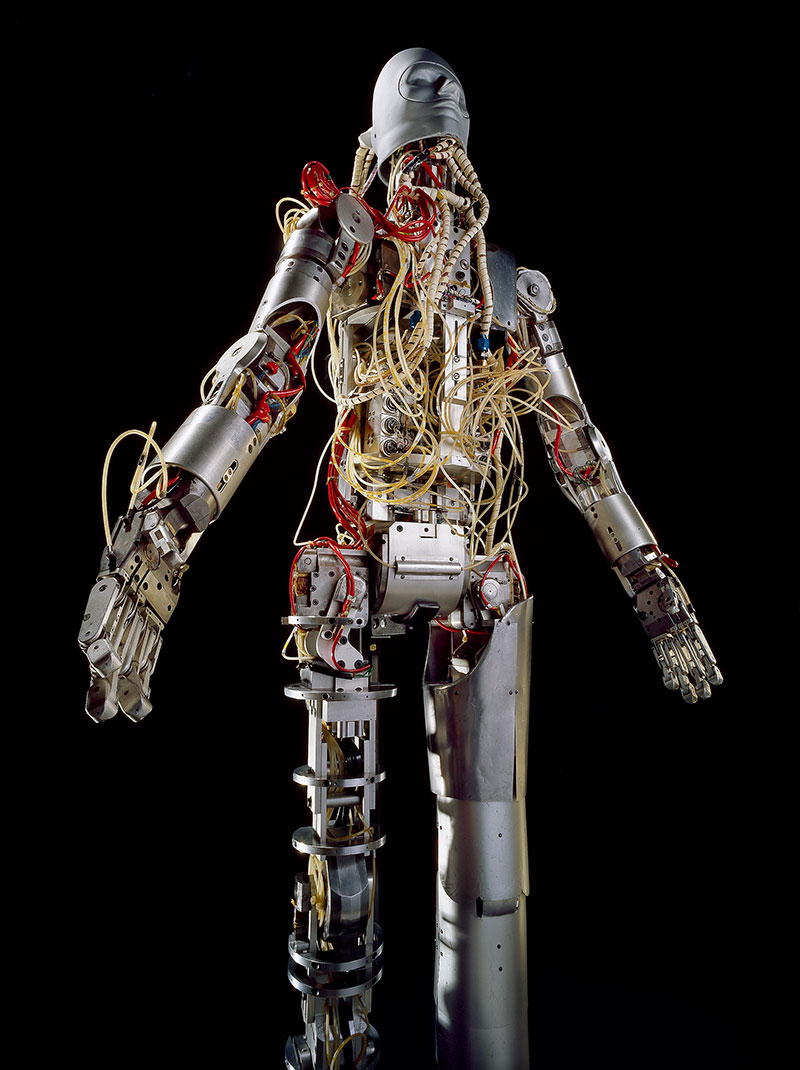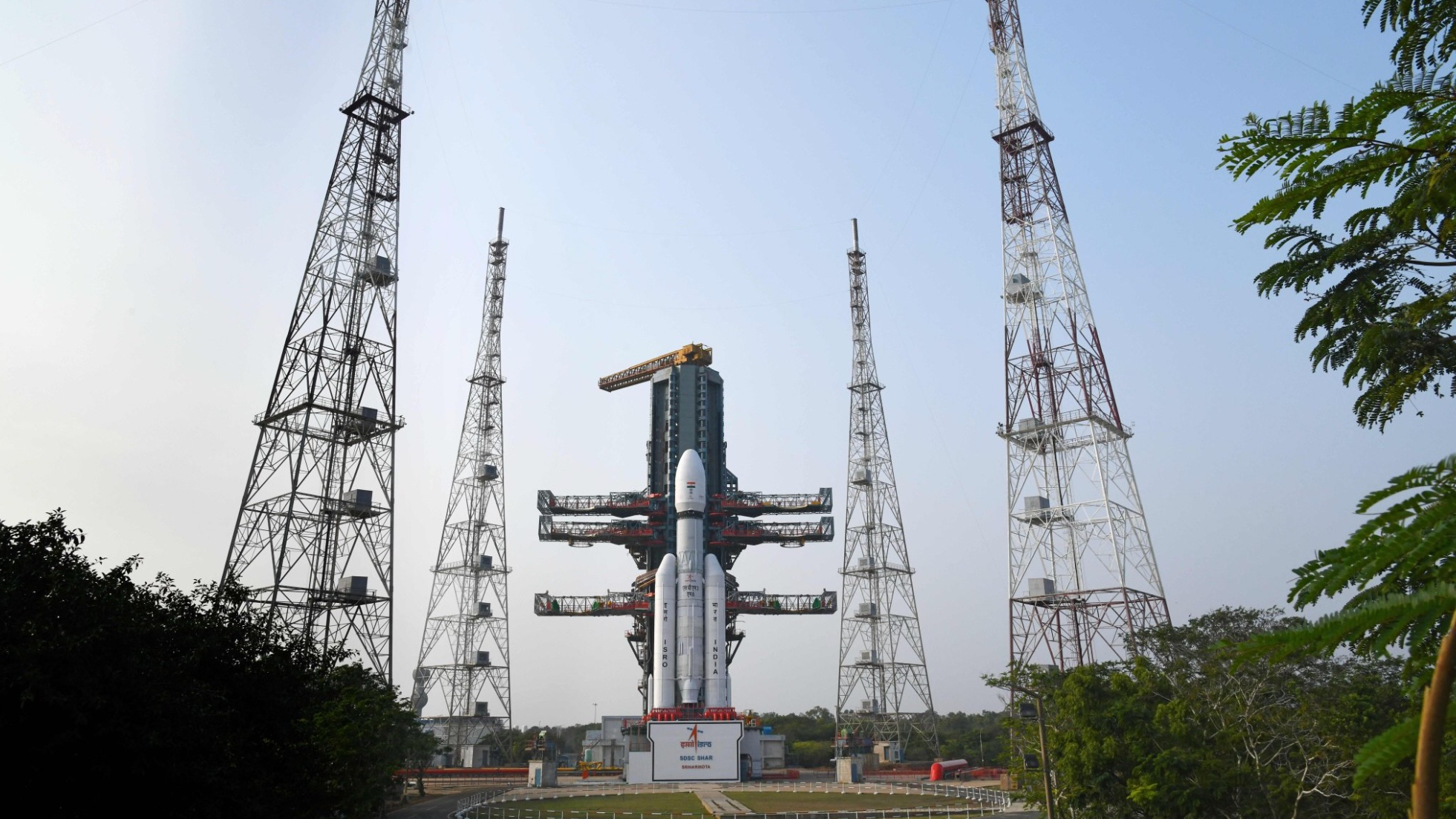Smithsonian FUTURES exhibit examines space artifacts of the future

A solar sail that tacked into the light, a keyboard used to navigate to the moon and a spacesuit-clad android are among the "artifacts of the future" in the new forward-looking display at America's first national museum.
"FUTURES," the Smithsonian's first major building-wide exploration of what is still to come, invites the public to imagine "the many possible futures on the horizon" — including what was once thought and what is now considered to be the future of space exploration. Opening on Saturday (Nov. 20) and running through next July, the exhibition and festival mark the temporary reopening of the Smithsonian's oldest museum, the historic Arts and Industries Building (AIB) on the National Mall in Washington, D.C., for the first time in nearly two decades.
"In a world that feels perpetually tumultuous, there is power in imaging the future we want, not the future we fear," Rachel Goslins, director of the Arts and Industries Building, said in a statement. "For 175 years, the Smithsonian has been helping people better understand who we are, where we have been and where we want to go."
Related: Iconic 'Star Wars' X-wing fighter finds a new home at the Smithsonian Museum
"With FUTURES, we want to invite all visitors to discover, debate and delight in the many possibilities for our shared future. There's no place better to do than in the Arts and Industries Building, the nation's original home for big ideas."
FUTURES, designed by David Rockwell with his architecture firm, the Rockwell Group, unfolds across four environments, one in each of AIB's four monumental halls: Past Futures, Futures that Inspire, Futures that Unite and Futures that Work. The exhibition comprises new immersive art installations, interactives, working experiments, inventions and speculative designs, as well as historic objects on loan from 23 of the Smithsonian museums, major initiatives and research centers.
FUTURES kicks off with a free virtual tour hosted by Bill Nye ("The Science Guy"), CEO of The Planetary Society on Friday (Nov. 19) at 11 a.m. EST (1600 GMT) on futuresremixed.com.
Breaking space news, the latest updates on rocket launches, skywatching events and more!
Launching into FUTURES
Of the nearly 150 objects on view, several are making their debut, including The Planetary Society's LightSail 2, a spacecraft that is continuing to demonstrate flight by light in Earth orbit. As part of Futures That Work, FUTURES will display two new models of the solar sail satellite.
"It's an honor to be included in this exhibit," said Nye. "Who knows where solar sailing will carry us in the coming decades and beyond?"
LightSail 2, which is currently orbiting Earth in an extended mission to collect as much data as possible to inform future solar sail missions, was the first satellite to achieve controlled solar sailing using a small spacecraft, in this case about the size of a loaf of bread.
"LightSail 2 acts as a precursor to the future," The Planetary Society said in a release. "The ability to equip a small spacecraft with a means of propulsion that does not require fuel could make deep space exploration more affordable and accessible."
Alongside the LightSail 2 models in FUTURES is a similar vision of the future, but from 1960. "Space Sail of the Future," an oil painting by artist Robert McCall, depicts what LightSail became — a spacecraft propelled by light from the Sun.
Space in FUTURES
FUTURES examines many aspects of what may come next, from artificial intelligence to enhanced humans. Space exploration is a part of those futures, as shown by the artifacts and artwork in several areas of the exhibition.
Past Futures (North Hall)
- Spacesuit Testing Android: Built by IIT Research Institute in the 1960s, this mechanical dummy has hydraulic and electrical parts that replicate the motions of the human body. Sensors measure the forces that would be exerted on a human wearing a spacesuit in space, allowing engineers to run experiments without putting humans at risk.
- "The Exploration of Mars": Painted by Chesley Bonestell in 1956, just before space exploration became real, the artist helped the public picture other worlds well ahead of spacecraft sending back photos.
- DSKY: A display and keyboard (or DSKY, pronounced "disk-key") built by Raytheon in 1967 for the Apollo Guidance Computer on board Apollo 7, the first crewed command module to fly in NASA's moon-bound program.
- Flight Data Container: Locker R12 from the Apollo 11 command module "Columbia" that held the literal instructions (checklists and flight plans) used to fly the first humans to land on the moon in 1969.
- Margaret Hamilton: A new portrait of the computer scientist who led the development of the Apollo spacecraft navigation software made by artist Nettrice Gaskins using Deep Dream Generator, a computer vision program that uses artificial intelligence to generate new and complex images.
Futures That Work (West Hall)
- BioSuit: Engineer Dava Newman's prototype spacesuit developed with NASA, MIT and the aerospace industry. Unlike the traditional, bulky, one-size-fits-all models, it is closely fitted. It uses stretchy polymers to permit a full range of motion and fit a wider range of users, both male and female.
Related: BioSuit: A Skintight Spacesuit for Astronauts (Photos)
FUTURES also displays a series of posters looking at the future of museums, including the future of space museums. A poster for the National Air and Space Museum promotes the opening of "The 1/8th Principle. How much is too much?", an 2071 exhibit focused on asteroid mining and off-world resource extraction.
Another poster, "A Space Museum... in Space," promotes the 2071 opening of the Smithsonian Orbital Annex.
Follow collectSPACE.com on Facebook and on Twitter at @collectSPACE. Copyright 2021 collectSPACE.com. All rights reserved.

Robert Pearlman is a space historian, journalist and the founder and editor of collectSPACE.com, a daily news publication and community devoted to space history with a particular focus on how and where space exploration intersects with pop culture. Pearlman is also a contributing writer for Space.com and co-author of "Space Stations: The Art, Science, and Reality of Working in Space” published by Smithsonian Books in 2018.
In 2009, he was inducted into the U.S. Space Camp Hall of Fame in Huntsville, Alabama. In 2021, he was honored by the American Astronautical Society with the Ordway Award for Sustained Excellence in Spaceflight History. In 2023, the National Space Club Florida Committee recognized Pearlman with the Kolcum News and Communications Award for excellence in telling the space story along the Space Coast and throughout the world.




